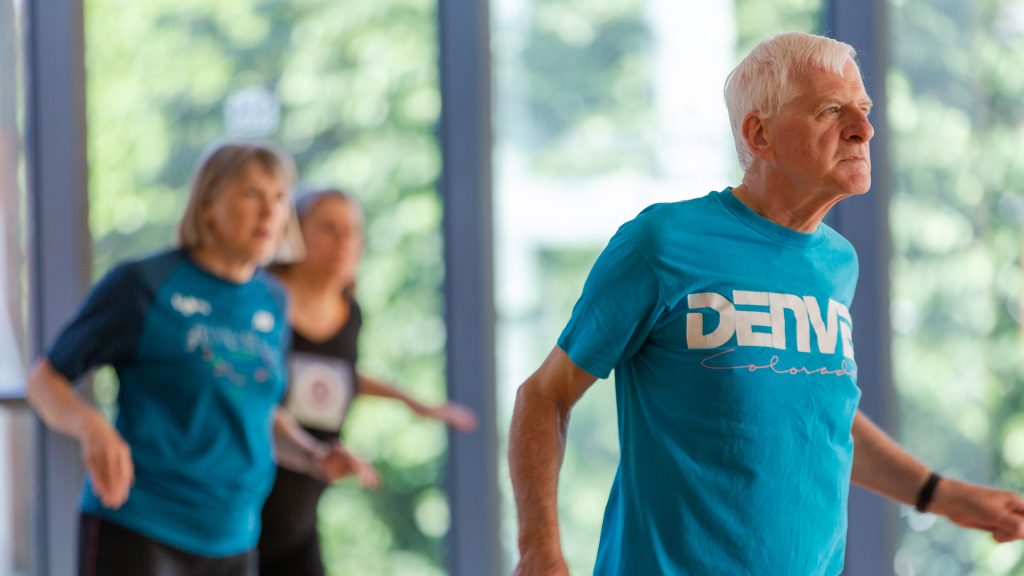A third of the British population are now over 50 and as age no longer defines the hobbies and lifestyle choices of retirees and those heading into retirement, we’ve come up with some training tips for people to enjoy as they get older.
A new study recently found that gym users in their 60s worked out twenty times more frequently (on average) each year than teenagers. However, there are still many retirees not prioritising exercise, with 33% of men and 50% of women engaging in no physical activity whatsoever by the time they turn 75.
Ideally, retirees should be taking part in frequent moderate exercise. The most accessible type of moderate exercise for older adults is walking, but it can also involve light jogging, using an exercise bike, riding a bike, swimming, using the treadmill and brisk walking. Moderate exercise increases your heart rate and breathing and is approximately a five or six out of 10 on the physical activity scale.
Top Training Tips
Getting and staying active develops joint mobility, increases energy levels and physical strength. It can also improve cognitive function, help you sleep and aid in preventing anxiety, depression, and other diseases and illnesses such as strokes, diabetes and heart attacks.

Read our top training tips to ensure you stay fit and active in your older years:
Warm up
As we get older, it can take a little longer to prepare our bodies for a workout, so remember to include a warm up in your regime. Try pedalling on a Wattbike for 10 minutes as this will increase your heart rate and have less of an impact on your joints. Follow with some light, dynamic stretching or foam rolling and you’re good to go.
Make Simple Changes
If we keep doing the same thing every training session, our minds and bodies will eventually get used to it. This means you’ll no longer be improving your fitness or strength levels. You don’t have to drastically alter anything, just implement some simple changes instead. This could include trying a new fitness class, changing or alternating the exercises you do and adding in some interval training.
Listen to Your Body
If you haven’t exercised in a while or are new to the world of working out, make sure you learn the difference between being in pain and feeling a bit sore after a gym session. It’s crucial to start off slowly so that your body gets used to exercising. If you’re experiencing sharp pain during, before, or after exercise, you should stop. If you feel sore, it may mean that you’re experiencing Delayed Onset Muscle Soreness (DOMS).

Injury Prevention
The key to improving our fitness levels and staying active is to take part in around 30 minutes of moderate activity, five days a week. However it isn’t essential to train every day, so make sure you factor in some time for a rest day or two. Our bodies also need time to repair and recover from training which prevents and reduces the risk of injury.
Work on Your Mobility
Our range of motion may start to decrease as we get older. Therefore, it is incredibly important to continue to stretch and do mobility exercises. There are a number of things you can try in order to increase your mobility levels. These include Yoga or Pilates classes, static stretching and foam rolling.

Core Workout
Another vital thing to keep in mind is that strengthening our core helps to maintain our posture. A bad posture can lead to a sore back, knees, and hips, so working on your core strength will benefit your overall health. While it may be tempting to do as many reps as you can, try not to over-exert yourself and aim for between six and 12 repetitions.
Check out our core strength training tips below:
Dead Bug
Lie on your back with your feet and arms pointing up towards the ceiling and knees bent 90 degrees.
Make sure your back is as flat against the floor as possible and slowly lower your left leg and right arm until they almost touch the floor.
Pause, then return to your starting point and repeat on the other side (this counts as one rep).
Wipers
Similarly, lie on your back with your arms straight out towards your sides, lift your legs and bend your knees to 90 degrees.
Manoeuvre your hips to the left without letting your legs touch the floor.
Return to the starting position by lifting your legs up.
To complete the set, move your hips to the right without letting your legs touch the ground.
Plank Crunch
To get started with the plank crunch, also known as the spider man crunch, place your body in the high plank position and fully extend and lock your arms in place.
Engage your core (imagine you’re drawing your navel into your spine) and straighten out your legs behind you.
Bend your left knee bringing it up towards your left elbow. Pause and lower downwards.
Repeat on the right side to complete one set.
Focus on Off-Feet Conditioning
Since our joints get more fragile as we age, it’s a good idea to include some off-feet conditioning into your training routine. Off-feet conditioning sets out to develop our conditioning, endurance and power with no impact on the joints and skeleton. The types of exercise you can have a go at include swimming, rowing machines and cycling. The Wattbike is a great choice for off-feet conditioning, as it is suitable for both beginners and more experienced gym users.